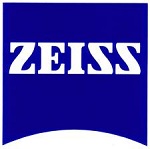The task of imaging tissue samples in histopathology is still widely based on the use of transmission electron microscopes (TEM). However, while the theoretically achievable resolution of these is usually not required in order to resolve the relevant structures in embedded and heavy metal stained material, its use certainly also limits the potential for process automation and hence productivity enhancement.
With ATLAS™, Carl Zeiss is presenting a novel approach to address the challenge of acquiring a large number of tissue images for routine use in a highly automated and thus cost-effective fashion. Given suitable samples, unattended operation can be performed even over a period of days.
Based on Carl Zeiss scanning electron microscopy technology, ATLAS™ allows the acquisition of images of up to 32 k x 32 k pixels at nanometer resolution. This corresponds to a field of view of several tens of microns in an individual image or 256 images acquired on a TEM 2 k x 2 k camera at the same resolution. With the in-built tiling mechanism a large number of such images can be automatically acquired to cover an even larger sample area.
Consequently ATLAS™ provides the possibility to transfer the time-consuming process of identifying regions of interest and analyzing their high resolution information from the microscope to an off-line PC. During this time the scanning electron microscope can continue to acquire data effectively, therefore increasing the productivity of your electron microscopy lab.

(A) Low magnification overview image of a single mosaic site consisting of 6 x 2 tiles, each 49 µm x 49 µm, acquired using the GEMINI® STEM detection system in a SUPRA® FE-SEM. Each image tile was acquired at 2 nm per pixel.




(B) A single 49 µm STEM-in-SEM image, acquired at 2 nm per pixel. The inset square illustrates the comparative size of a TEM image acquired on a 4 k x 4 k camera, also at 2 nm per pixel.(C) Detail from an approximately 9 µm x 9 µm region of Image B. Note the image quality is comparable to results obtained by conventional TEM. At full resolution, key organelles are readily resolved including (D) post synaptic densities at synapses, (E) polyribosomes and (F) crosssectioned microtubules suitable for serial tracing and dense reconstruction. Results courtesy of John Mendenhall, Center for Learning and Memory, University of Texas at Austin.
Key Benefits of ATLAS from Carl Zeiss
The Key Benefits of ATLAS™ from Carl Zeiss include:
- Full flexibility in choice of detectors for imaging including the STEM and BSE detectors for TEM-like images
- Highly automated, multi-site image acquisition process with automated stage motion, focus, stigmation, brightness and contrast adjustment as required
- In-built image tiling mechanism for acquiring multiple images at multiple sites to cover large sample areas at highest resolution
- Freely configurable individual image size from 1 k x 1 k to 32 k x 32 k pixels
- Viewer software tailored to efficiently handle multi-gigabyte images and image mosaics generated by ATLASTM including semi-automated stitching routines

This information has been sourced, reviewed and adapted from materials provided by Carl Zeiss Microscopy GmbH.
For more information on this source, please visit Carl Zeiss Microscopy GmbH.